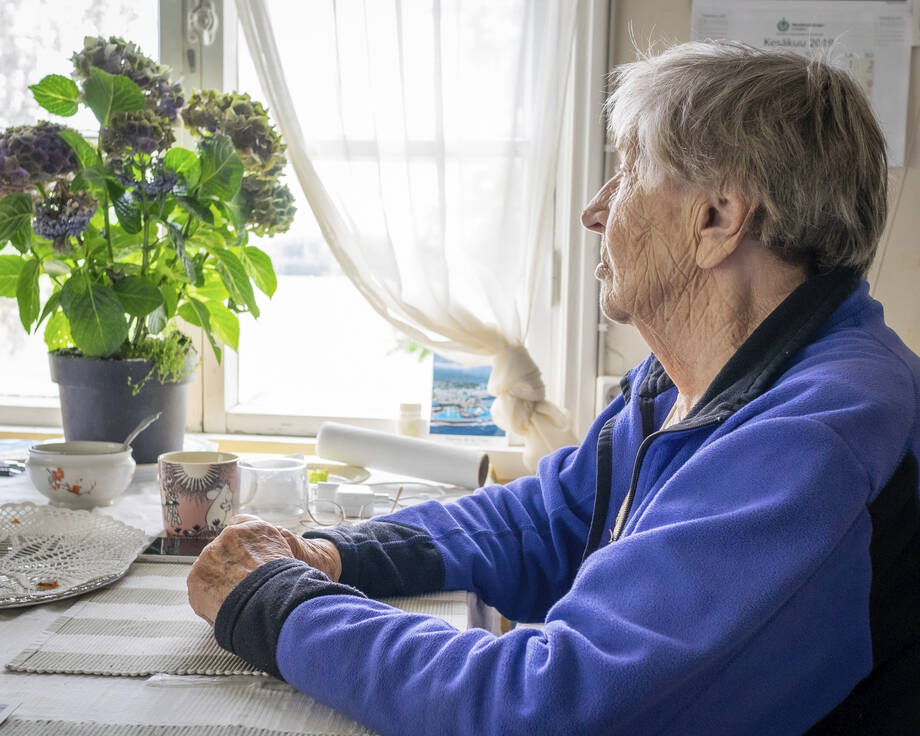Home care

The national goal is to enable older people to continue living at home for as long as possible, even until the end of their lives. When a person needs care, they can get it at home or in a home-like environment.
Often, home care and other support provided at home consists of services provided by public and private parties and organisations. A network that consists of professionals, family members and volunteers can fulfil the older person’s wish to live in their own home.
When living at home is not possible even with home care are communal housing, adult foster care of older people and service housing with 24-hour assistance possible alternatives for housing and providing care and support. Long-term institutional care could be organised at health centre wards, if there were medical grounds or grounds related to patient safety for doing so.
Most older people live at home
Most older people live at home independently and do not need home care services. In 2021, approximately 16 per cent of those aged 75 or over were covered by regular home care. You can find this and other statistics from the Statistical information on welfare and health in Finland (Sotkanet.fi).
More statistics on older people services (Sotkanet web site)
Home care clients need a wide range of help and support
The older people cared at home are increasingly older and they need many types of help and support. 77 percent of regular home care clients use a lot of home care services. Every fifth home care client is provided three or more house calls per day.
The daily number of home care clients has increased since 2018. The number of personnel in home care in May 2021 was 17 000 of which 74 percent were practical nurses and 12 percent nurses or public health nurses.
Providing good quality home care requires adequate resources, reformation of practices and competent leadership.
What kind of support does an older person need at home?
An older person’s living at home is supported by:
- home care
- other support provided at home
- help given by family members and other close people
- adult foster care of older people
- volunteer workers
- technological solutions.
In addition, and older person might need
- changes in the home and assistive devices
- day centre activity
- mobile, online and remote services
- intermittent inpatient care and rehabilitation periods and physiotherapy
- services of a physician, memory nurse and social worker
- hospice care.
Some older people need help at night or on weekends. Help is also needed for acute and unexpected situations. These can be provided by ensuring that
- round-the-clock social, health care and rehabilitation services are easily available locally
- temporary helping parties are made a part of the overall service portfolio
- technology that prevents hazards and assists in responding to the need of help is utilised.
Technology can help to support the independence, wellbeing, safety and security of an older person living at home. For example, access control and monitoring devices and door alarms have become standard in many regions.
Technology supporting smart ageing and care at home programme (KATI) promotes use of new technologies that support living at home and home care.
KATI programme web page
If you need support for living in your own home contact the social welfare services of your home municipality. There you will get advise and information about available services.




